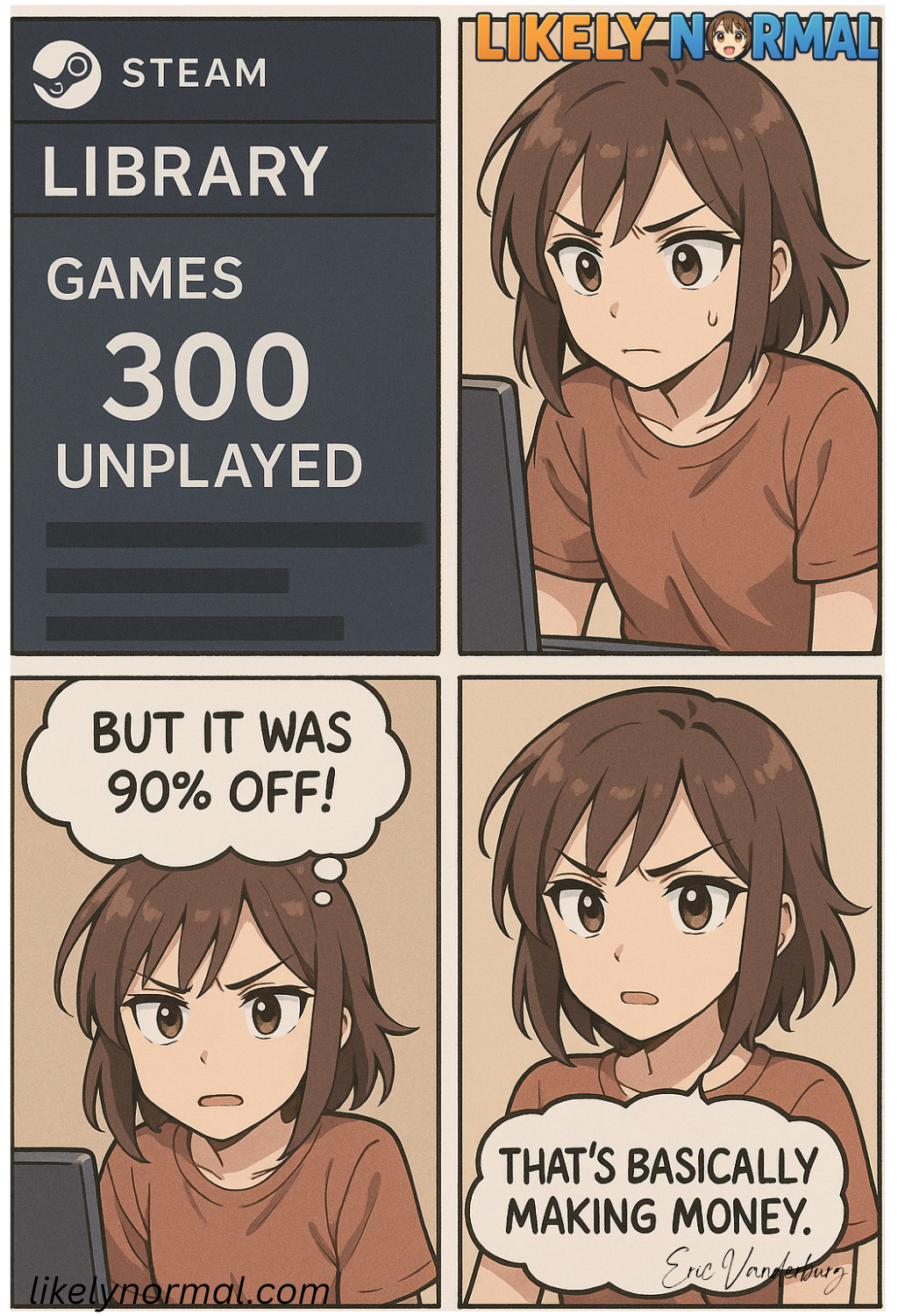Illusory Savings
The Steam Summer Sale is a magical time of year when your bank account weeps, your hard drive screams for mercy, and your common sense takes a hard vacation. You log on just to browse, like some kind of innocent fool, and suddenly you’re $47 deep in a bundle of games you’ve never heard of, all because they were “90% off!!!” and “Overwhelmingly Positive!!!” Of course, this just means three people in 2012 left reviews like “game opens. 10/10”
The logic is flawless, of course: “I don’t need ‘Medieval Basket Weaving Simulator 3,’ but what if I become a person who needs it??” Your library now looks like a digital hoarder’s paradise—300 games, 12 played, and one (1) achievement unlocked: “Started Game” in a title you forgot existed. But no regrets, because someday, when the apocalypse hits and the internet dies, you’ll finally install all those zombie survival games you bought in 2016. See? Prepared.
And let’s not forget the real addiction: watching that little green “-90%” badge pop up like it’s a dopamine slot machine. By the time you’ve hit “purchase,” you’ve already rationalized it: “It’s basically free if you divide the cost by hours I’ll definitely play!” You won’t. You’ll stare at the icon once and go back to your 4,000th hour of Skyrim.
Final thought: Steam sales aren’t shopping—they’re archaeology. You’re not buying games; you’re excavating the corpse of your self-control. But hey, at least your grandkids will inherit a sick library.

Discussion ¬